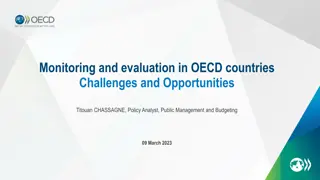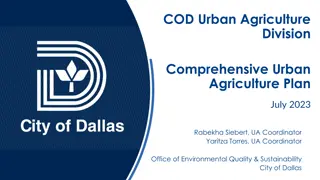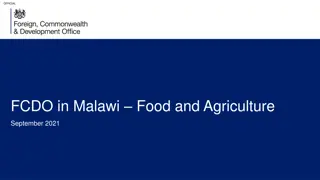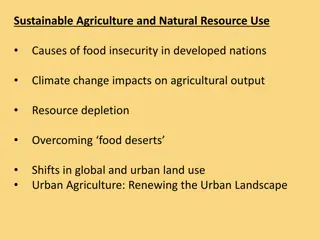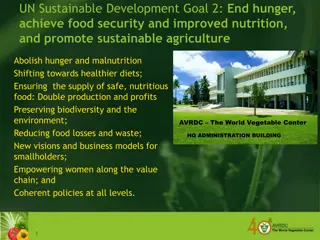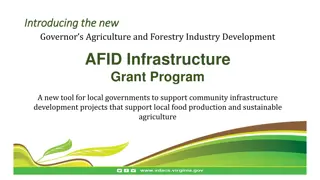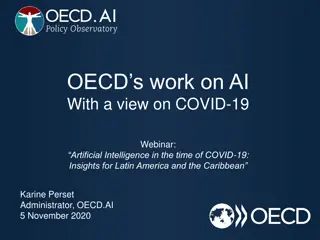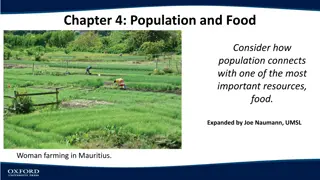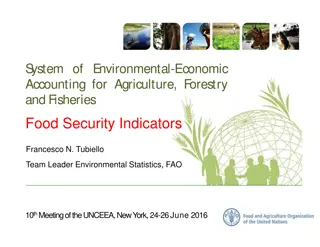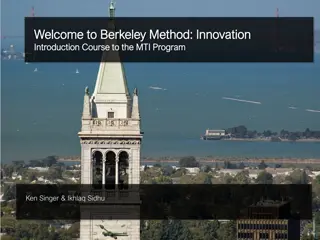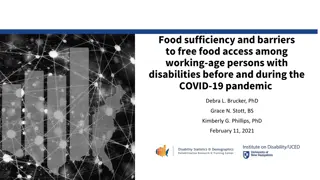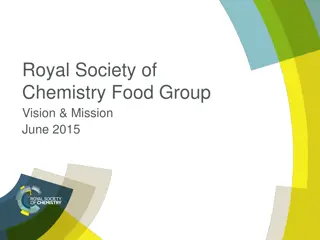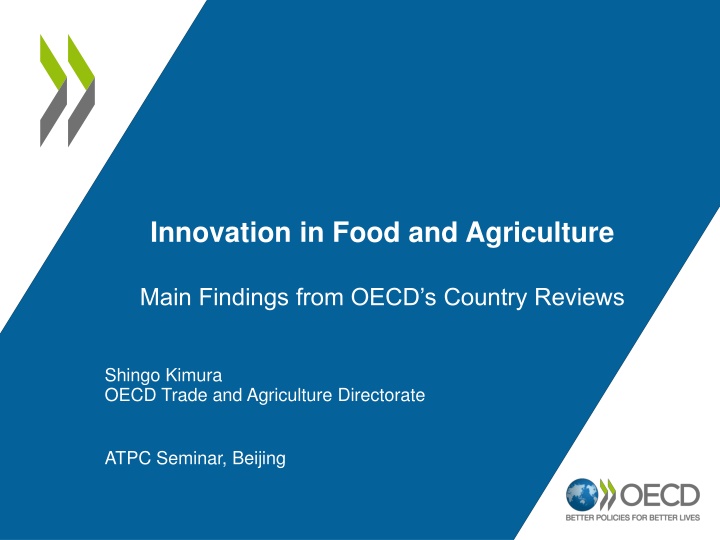
Innovation in Food and Agriculture: OECD Insights
This content delves into the main findings from OECD's country reviews on innovation in food and agriculture, emphasizing the challenges, opportunities, and importance of governance in the agricultural innovation system. It explores the sources and destinations of value-added in agricultural products, highlighting the role of technology and collaboration in driving innovation within the sector.
Download Presentation

Please find below an Image/Link to download the presentation.
The content on the website is provided AS IS for your information and personal use only. It may not be sold, licensed, or shared on other websites without obtaining consent from the author. If you encounter any issues during the download, it is possible that the publisher has removed the file from their server.
You are allowed to download the files provided on this website for personal or commercial use, subject to the condition that they are used lawfully. All files are the property of their respective owners.
The content on the website is provided AS IS for your information and personal use only. It may not be sold, licensed, or shared on other websites without obtaining consent from the author.
E N D
Presentation Transcript
Innovation in Food and Agriculture Main Findings from OECD s Country Reviews Shingo Kimura OECD Trade and Agriculture Directorate ATPC Seminar, Beijing
OECD applied the G20-initiated analytical framework for improving agricultural productivity and sustainability to review policies 2
Challenges and opportunities for agriculture and rural development in East Asia Macro- economy Demographic trend Income growth led by non-farm sectors Concentration of production to large-scale operator and high value-added products Rural-urban income disparity Constraints in natural resource Agricultural sector Technology and data driven agriculture Integrated regional and global value chain Climate change Global OECD Trade and Agriculture Directorate 3
OECD reviews show that governance of agricultural innovation system is key Innovation in agriculture is increasingly depends on technologies developed outside the sector Innovation became a highly interactive process of collaboration between a variety of actors The challenge is to make the agricultural innovation system more responsive to needs and more effective in generating innovative solutions This is much beyond R&D policy, the whole policy and market environment matters for innovation Fostering the skills of farmers to innovate and engage with other stakeholders 4
What is the source of value-added in agricultural products? Sources of value added in the final demand in the agriculture, 2014 Sources: : Adapted from: Greenville, J., K. Kawasaki and M. Jouanjean (2019), "Value Adding Pathways in Agriculture and Food Trade: The Role of GVCs and Services", OECD Food, Agriculture and Fisheries Papers, No. 123, OECD Publishing, Paris OECD Trade and Agriculture Directorate 5
Where is the value-added by agricultural sector ends up? Destination of value added by the agriculture, 2014 Sources: : Adapted from: Greenville, J., K. Kawasaki and M. Jouanjean (2019), "Value Adding Pathways in Agriculture and Food Trade: The Role of GVCs and Services", OECD Food, Agriculture and Fisheries Papers, No. 123, OECD Publishing, Paris OECD Trade and Agriculture Directorate 6
Developing policy and market environment more conducive for innovation Less directive policy, focusing beyond agricultural production Further shift to non-commodity specific producer support Enhance farmers role in managing normal business risk More role for private input and service markets Ensure a level playing field among agricultural input and service providers Increase the role of private extension services on areas of public interest and policy advice OECD Trade and Agriculture Directorate 7
Public agricultural R&D should concentrate more on the pre-competitive area of research R&D expenditure by research area and funding source, 2013 Source: China Statistical Yearbook on Science and Technology and China Agricultural Science and Technology Statistics, 8
Public R&D investment in United States concentrates in the areas private sectors would underinvest Funding share in different areas of agro-food R&D, 2013 Source: USDA 9
International research collaboration strengthens own agricultural innovation system International co-operation in agro-food R&D, 2007-12 Agro-food outputs with foreign partners as a share of total agro-food outputs 10
Example of producers proactive engagement in agricultural innovation process R&D Human capital development Industry and government co- finance the professional education in agriculture. Producers actively participate in education Skill priorities and action plan was identified by industry council Netherlands Industry set the research agenda and government match the fund Australia RDC collects 0.5% of production value from producers, which is matched by the government. RDC decides research agenda Farmers federation set up the fund for demand-driven R&D, in which 1/3 is funded by the government. 226 regional consortia set R&D agenda and perform R&D, hiring technicians Sweden Industries engages in education in agricultural universities Argentina 10-12 producers meet every month and share experiences, which is open to non-members 11
Developing more collaborative and participatory agricultural innovation system More proactive industry participation in innovation process Introduce co-funding schemes for agricultural R&D with producer organisations Participation in agricultural education to avoid mismatch of skill supply Cross-sectoral collaboration in agricultural innovation Focus agricultural R&D on pre-competitive research areas with a medium-long-term perspective and on areas not specifically tied to commercial production Increase funding for collaboration, and co-funding with the private sector and foreign researchers More integration with general innovation systems OECD Trade and Agriculture Directorate 12
Suggested directions of policy reform Supply oriented policies to guide production decision and technological choice Demand oriented policies to address producer s management constraints and expand business opportunities Economy-wide policies to connect agriculture to competitive technologies and skills outside the sector Sector specific policies and institutions to isolate agriculture Integrated policies in which all the producers commit to the improvement of environmental performance Segmented policies to support environmentally friendly farming OECD Trade and Agriculture Directorate 13
Contact us We look forward to hearing from you! You can reach us via e-mail by sending your message to the following address: We invite you to connect with us on Twitter by following: Access all of the information from the Trade & Agriculture Directorate at: tad.contact@oecd.org @OECDagriculture www.oecd.org/tad www.oecd.org/tad Trade and Agriculture Directorate Organisation for Economic Co-operation and Development (OECD) 14 1414

